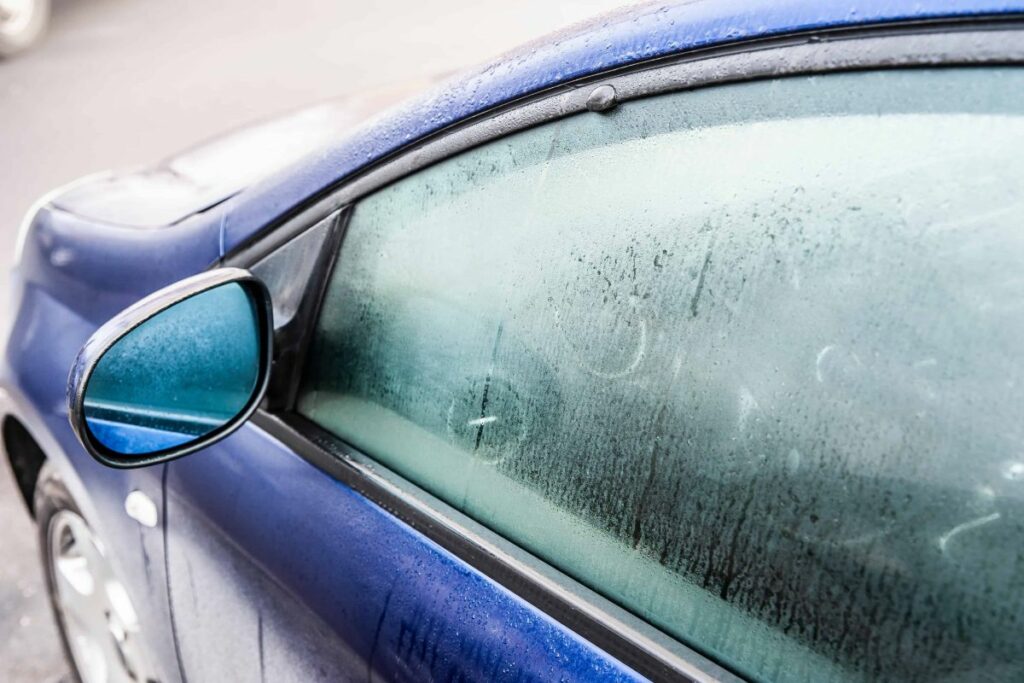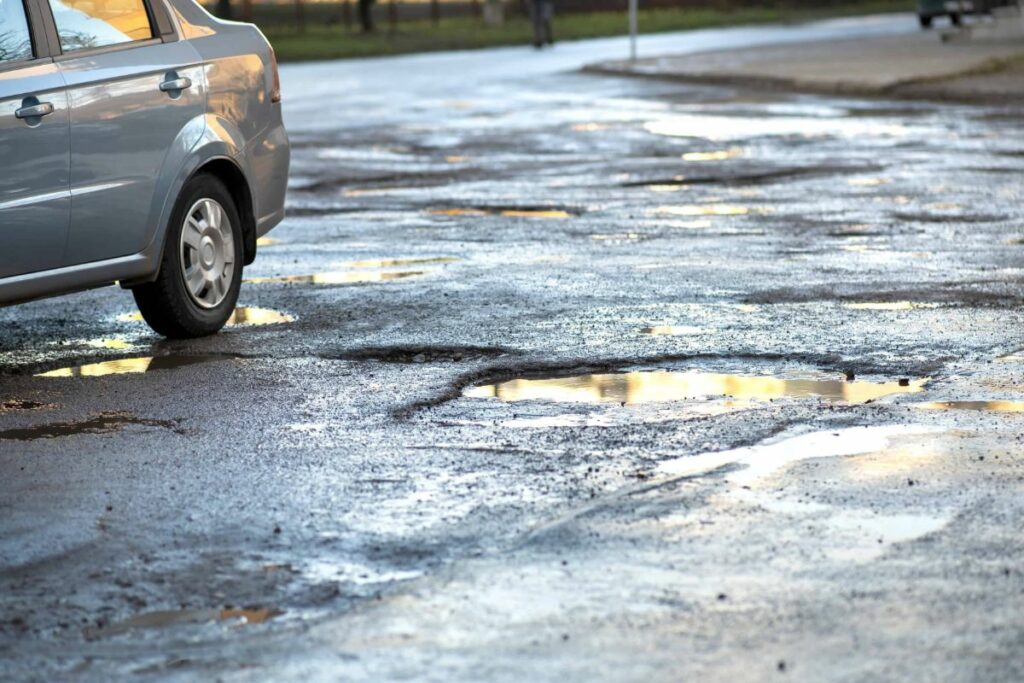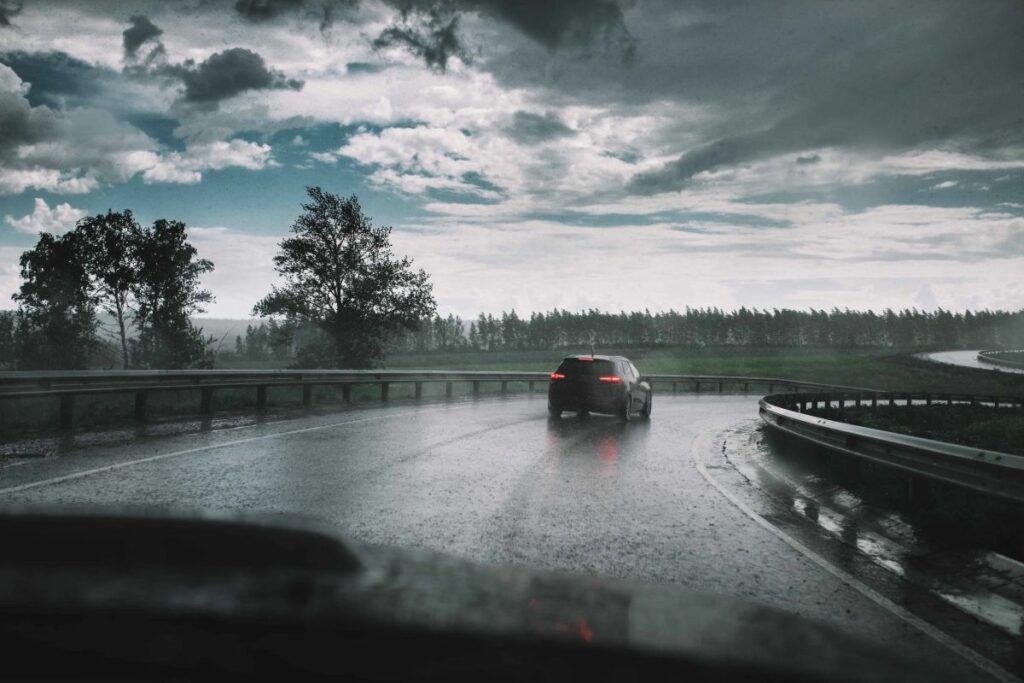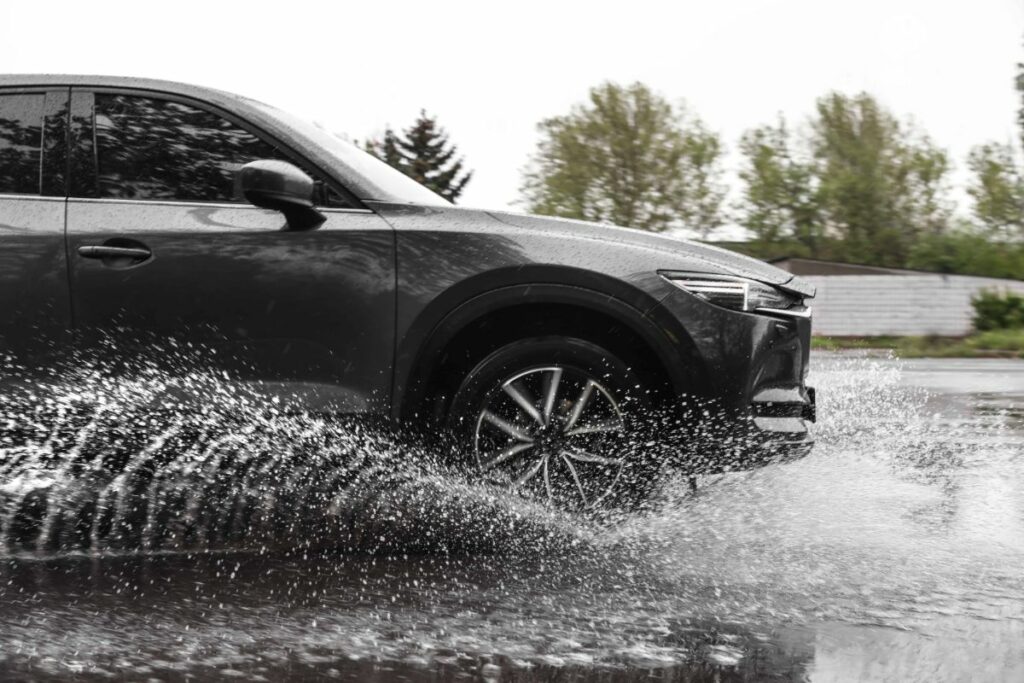Whether you are a new or experienced driver, driving in the rain poses challenges. Staying safe on rainy roads requires preparation, heightened vigilance, and the adoption of suitable “bad weather” driving behaviours. In this guide, we will help prepare you with information and tips so you can drive safely in adverse weather conditions.
Check Your Car's Equipment
Before you get into your car and drive in the rain, make sure you double-check your car’s equipment. If you’re an inexperienced driver or you have just bought your first car, this is a crucial step to ensure that your car is ready for the road. You will want to check a number of things:
1. Headlights, taillight, brake lights, & hazard lights
The easiest place to check is to look at your car’s dashboard. If any lights or systems are failing, your dashboard will display signals and alerts to let you know. You can double-check your headlights and taillights by switching them on and off and applying the handbrake. Walk around your vehicle to check that they are working and the lights are turning on.
Tap the brake pedal and look in your mirrors for signs of illumination (e.g., look in nearby reflective surfaces). You may need to ask a passenger to confirm that all lights are working.
2. Windshield wipers
If your windshield wipers do not operate quietly and smoothly, they may struggle to clear away water when driving in rain. Wiper blades should glide in contact with the glass at all times. Check to see if your windshield wipers are functioning properly.
3. Vehicle tires
Skidding on wet surfaces is caused by a loss of friction between your tires and the road. Check your car for balding tires. If only about a hand-sized section of each tire is in contact with the road, meaning tread depth is critical. In addition to treads, you will want to ensure that your tires have enough air too. Read on to find out more about handling skids and hydroplaning below.
Use Your Window Wipers

While this may appear to be an obvious advice, many people neglect to switch on their wipers in light rain. A blurred field of vision can affect reaction time, increasing the danger of accidents.
If your car has rain-sensing wipers, switch from the manual to the automatic wiper feature to ensure you don’t forget to use your wipers in even light rain. The sensor works by sending out a beam of infrared light from your car to the windshield - where rain is present, the light reflects at a different angle, triggering your wipers. These sensors are great because they increase in speed when they sense more rain and slow down when the rainfall is minimizing too.
Switch On Your Lights, But Not Too Bright

In some U.S. states, there is a legal requirement to switch on your lights whenever your wipers are in use. There is no such law in Canada, but switching on your lights makes you more visible to other drivers. The thinking is that if your visibility is low, other drivers cannot see very well either.
Make sure you select sidelights to avoid dazzling other drivers. Sidelights aren’t as bright but will still make you visible to cars approaching from the left side, right side, front, and rear.
Get Rid of Foggy Windows

Rainy weather increases humidity levels. Engage your car’s air conditioning (AC) for purposes of reducing humidity in the cabin and defog the windshield before you drive.
Make sure you avoid the common mistake of using your car’s air recirculation feature (the button with the swooping arrow on it). Air recirculation speeds up the cooling process by cooling and re-cooling the same air without mixing in hot air from outside. Recirculating moist air will not help to reduce fogging in your vehicle.
Newer models sidestep the issue with sensors that switch between fresh air and recirculated air to manage the humidity in your vehicle automatically.
Slow Down and Drive Cautiously
Even if you have new tires, your car will not be able to grip the road as well when driving in wet weather.
Remember, posted speed limits indicate the maximum driving speed on dry roads. Consider bringing the needle on your speedometer down to better suit the situation when driving in rain. For example, in France, the 130 km/h limit reduces to 110 km/h in wet weather. While no such law exists in Canada, it’s worth your consideration. Driving more cautiously means you have better control of your vehicle.
Watch for Puddles and Standing Water

Puddles and standing water pose a danger of skidding. Oil and other vehicle lubricants present in the road’s pits and cracks float to the surface in rainy conditions, meaning puddles and standing water could be more greasy and slippery than anticipated.
Try to steer slightly more towards the crown, or raised centre, of the road to avoid puddles and standing water. If you lose traction, your car may aquaplane.
Add Distance Between Cars

When travelling at 50 km/h in dry weather, you should allow a two-second distance between you and the car in front. Two seconds is a distance of roughly six car lengths. The rule increases to four seconds (18 - 24 car lengths) when travelling at highway speeds. Again, that is in dry conditions.
When driving in the rain, you can expect your stopping distance to double. When travelling in ice and snow, your stopping distance could be as much as ten times the norm. The reasons are not just due to the physical road condition. Poor visibility and slower reaction times also add to the increased stopping distances.
Try Not to Brake Heavily
If you apply the brake heavily in dry conditions, you may lose traction between your tires and the road surface. The problem becomes worse at higher speeds. In wet conditions, the reduced friction between your tires and the road means more danger of losing grip when braking.
One solution is to stay back, observe the road ahead, and take your foot off the accelerator in anticipation of slowing down, meaning you can brake gradually, using gravity and resistance to help slow your speed.
It’s also important to remember to remove water from your brakes after splashing through water. Apply the brakes gently to scrub your brake pads and remove excess water, minimizing the amount of liquid on your brake pads.
Don't Use Cruise Control
Cruise control is one of many modern driver-assist systems that can cause a false sense of security when driving in heavy rain.
Avoid using cruise control in wet driving conditions and focus on manually releasing the accelerator pedal as a means of decelerating.
If your car starts to skid, the manual release of the accelerator pedal will help to redistribute weight to the front of the vehicle, helping to slow you down. This would not be possible if you were using the car’s cruise control.
Avoid Hydroplaning

Hydroplaning is when the water builds between your car wheels and the road surface. This causes a loss of traction which prevents the car from responding to controls and causes the car to skid. When your car starts to hydroplane, braking won’t affect your speed. Although diminished and potentially intermittent, steering is the only thing you can manipulate in your favour, with gravity and a gradual build-up of resistance between your tires and the road helping to slow you down to a point at which traction returns.
Hydroplaning can be a scary experience in any traffic situation. The good news is that there are things you can do to regain control when hydroplaning:
- Remain composed
Hydroplaning will cause panic. When you panic, you may forget how to react appropriately to the developing situation, meaning you could fail to capitalize on moments of grip between your tires and the road. Make sure you stay calm.
- Release the accelerator
Let go of the accelerator and avoid increasing your car’s speed. With nothing powering the car, you will start to slow down. Not only will this help to reduce speed, but it will reduce the force you carry into any potential impact.
- Avoid braking
Applying your brakes could lock your wheels, although ABS systems and stability control programs on the top best electric cars can help to prevent locking. You need your wheels to turn as soon as they find grip, increasing the likelihood of maintaining traction. Where your tires are at a 45-degree angle to the direction of travel, for example, the tires will not turn when they gain grip and may start to slide again.
- Steer towards the direction your car is skidding
Unless you aquaplane forwards in a straight line, your rear end will swing out to the left or right. In either case, steer towards the direction your vehicle is moving, not the direction you are facing. You stand a better chance of regaining control where your tires line up in the direction of travel.
Stay Focused and Don't Get Distracted
You must adjust your driving habits in a downpour to drive safely and help avoid accidents. Distractions can cause you to forget tips such as reducing speed, avoiding cruise control, and increasing the gap to the car in front.
How to stay focused when driving in the rain:
- Don’t multitask and keep your hands on the wheel.
- Pre-load a lengthy playlist so you don’t run out of music. Or, simply turn off the music system if it easily distracts you from your driving.
- Set aside extra time because on no account should you rush your journey.
- Resist checking mobile devices or trying to look at GPS systems.
- Avoid conversations and making hands-free calls.
Avoid Unnecessary Trips
Reconsider any unnecessary car trips before you drive in heavy rains. Even light rain can cause slippery road surfaces. While other drivers may reduce their speed to drive safely in heavy rain, the average driver is unlikely to observe safe driving behaviours in anything less than a downpour. The risk that other drivers pose on wet roads is a consideration.
Unless your journey is related to something strictly necessary for time-sensitive valid reasons, such as the health and well-being of yourself or others, don’t take the risk.
